Why you can trust TechRadar
As we mentioned, the processor at the heart of this hybrid is a top-of-the-range Intel Core processor, however, the issue is that it's from the last generation's line-up.
The chip inside is an Ivy Bridge Intel Core i7 3517U 3rd Generation model. The 4th Generation, nicknamed Clover Trail, which came out earlier this year, boasts better speeds and dramatically improved battery life.
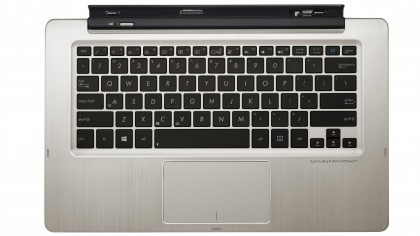
There's 4GB of RAM, which is bog-standard for an Ultrabook, and all you need for a snappy system in Windows 8.
Sticking with the theme of a typical Ultrabook experience, there's no dedicated graphics card, which will disappoint many people who are prepared to pay in excess of £1,500 for a laptop.
All pixel-pushing is left to the Intel HD 4000 chip, which can handle movie playback and games from the Windows Store, but not a lot else.
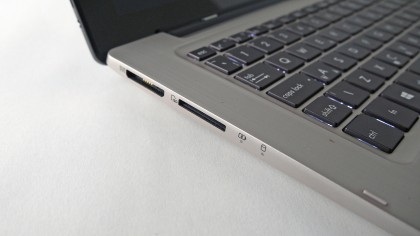
However, that's where the similarities with its peers end, and the rest of this unusual transforming laptop enjoys a rather storming set of specs.
The first is the screen, a gorgeous-looking full HD 1,920 x 1080 panel.
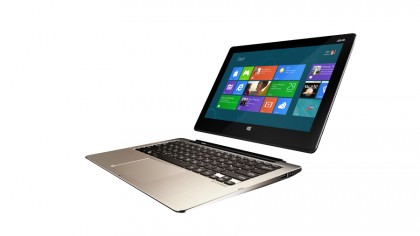
It's not just the super-sharp resolution that makes the Transformer's screen special, it's the deep colours and super saturation. The exaggerated deep colours make the screen instantly enjoyable, whether it's scrolling through the Windows 8 start screen or watching a movie on YouTube.
The only downside to the high-resolution panel is that every on-screen item is tiny. We genuinely found it tough to read text in places when sitting a comfortable distance from the screen, and it also makes navigating the back-end of Windows 8 with your finger even tougher than normal.
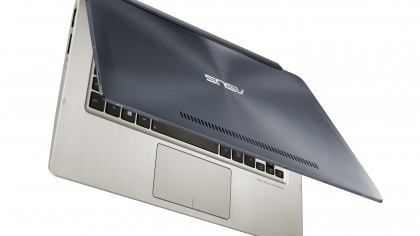
Turning the resolution down did help a little, but the pixelation was so bad that we quickly turned back to 1080p.
Opting for the transformer design enables a host of benefits that other laptops can't enjoy, such as a second battery and two hard drives. The TX300 boasts from two batteries, one in the screen and the second in the base unit. They combine to make a 5000mAh cell that's bigger than most Ultrabooks.
The Asus Transformer Book TX300 dual-wields a 500GB HDD and a 128GB SSD, offering users the best of both worlds.
One of the issues with hybrids is that you're limited to around 128GB of internal storage, and in many cases formatting takes that down to just 70GB of usable space. There's no such issue here and you get 500GB of file storage to fill up with media and documents, with a speedy 128GB to keep applications snappy.
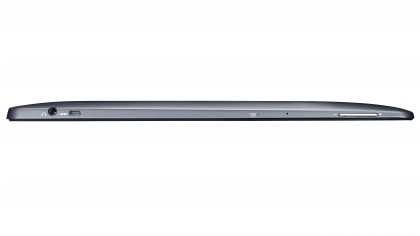
There are a few issues with this package, and connectivity is one of them. There's no HDMI, with DisplayPort preferred instead, which is awkward for those who are used to the industry-standard connection.
There are two USB 3.0 ports on the keyboard itself, but, crucially, none on the screen, which somewhat undermines its usefulness as a standalone device.
This goes back to our point that the TX300 is very much a laptop device, with its tablet transformation better suited to occasional sofa surfing and media.
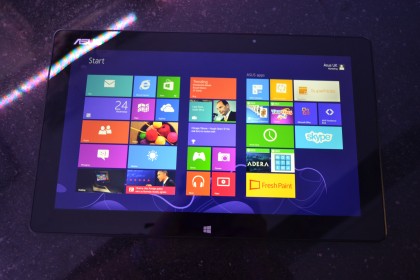
There is Ethernet provided which is good for serial desk-hoppers, and there's also an SD card slot too, but again, these are on the keyboard dock rather than the screen. That panel does enjoy a micro HDMI slot, as well as a 3.5mm headphone jack.
The second significant problem with the Transformer TX300 is weight. Having been spoiled with a host of Windows 8 laptops, Ultrabooks and tablets that weigh around 1KG, such as the excellent Sony VAIO Pro 13, we were shocked to discover the Transformer's combined weight of 2KG. It's by no means unportable and it is pretty slim and light, but it's noticeable compared to the recent crop of sleek new laptops.
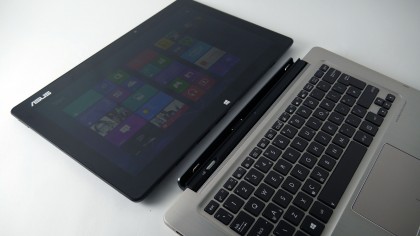
Having spoken to Asus about this, the company was quick to point out the extras that are included in the package.
Yes, there's the double battery, the aluminium chassis and the full-sized keyboard, which, incidentally, is fantastic to use. However, do you get anything the Sony VAIO Pro 13 doesn't offer, at double the weight? Only the tablet functionality, which won't appeal to everyone.
But how does it perform? And can this laptop work as a tablet? Read on to find out.
